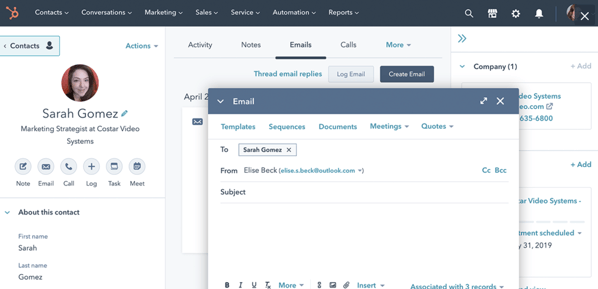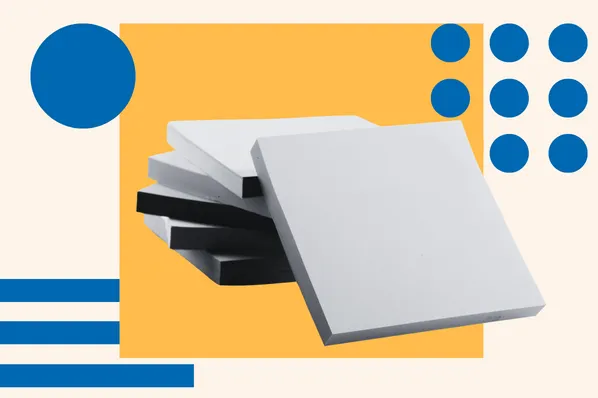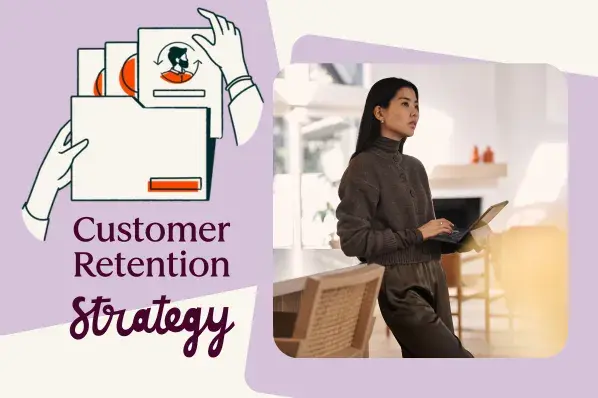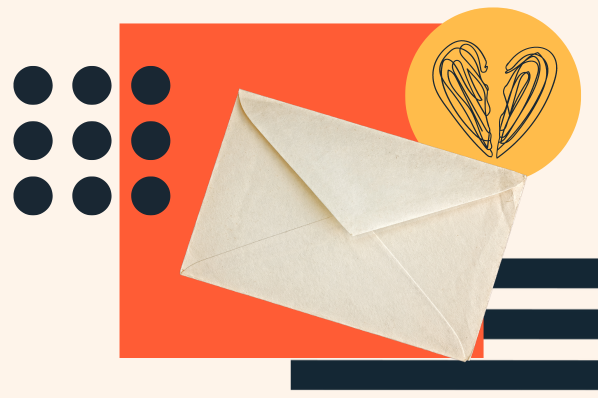Table of Contents
CRM and Customer Retention
Customer retention is a strategy for getting more of your customers to remain loyal to your brand and business over time.
Your customer retention strategy boosts your profitability while encouraging repeat business to drive a sustainable, long-term business model. Customer retention automation can help you achieve these goals with a little help from technology.
In this guide, we'll review some tools and strategies that you can implement to retain customers. This includes the ways you can use a customer relationship management (CRM) tool to bond your sales and customer service teams for mutually beneficial results.
Customer Retention Tools
- Customer Relationship Managers (CRM)
- Customer Loyalty Programs
- Gamification
- Personalization
- Automation Tools
- Customer Service and Support Software
- Customer Feedback Tools
1. Customer Relationship Management (CRM)
A CRM is a system that can help you manage all of your customer relationships. You may be wondering, "Is there really a relationship between a CRM and customer retention?"
The answer is yes.
Using a CRM for Customer Retention
By tracking, optimizing, and personalizing every interaction customers have with your business, you can improve the buyer's journey. You can also make changes to your sales process, customer support, marketing efforts, and customer satisfaction — all of which directly contribute to your ability to retain customers. A CRM can help you accomplish all of this across the entire business, not just within your sales org.
In fact, a CRM platform like HubSpot — which offers plans that are ideal for SMBs and enterprise businesses — includes powerful sales, marketing, service, and CMS tools. You'll also have a complete library of available integrations that can be used to help you consistently offer a delightful customer experience at every touchpoint.
Below is an example of HubSpot in action as a customer retention tool.
CRM System: HubSpot CRM Platform
No matter if you're a startup, mid-size, or enterprise company, any business can use HubSpot's all-in-one CRM platform to improve customer retention.
Working with HubSpot to Improve Customer Retention
Start with personalized and highly-relevant marketing content. This tailored marketing has many benefits, including:
- Fostering brand awareness
- Attracting members of your target audience
- Converting your audience on CTAs, blog posts, email signups, etc.
Marketing Hub is a marketing automation software that helps your team do just that. You can create posts that attract the ideal audience members, convert those people, and run complete inbound marketing campaigns at scale.
Next, in Sales Hub, sales reps have access to all of the relevant contact and buyer information they need to reach out to leads. The acquired contact data will be automatically entered and organized in the CRM after every interaction to save reps time.
Sales Hub retains customers by allowing sales reps to:
- Set automated sales follow-ups and reminders
- Use email templates and email tracking
- Record and track calls
- Use a number of reporting features to deepen relationships with prospects and build a sense of trust (another tactic for retaining customers)
Lastly, the customer service and support features of the CRM will contribute to customer retention.
When a customer comes to the team with a question, a service rep can quickly pull up their profile and view every interaction they've had with your business for context. That includes which product they own, how long they've been a customer, how often they buy from you, and notes taken by sales or service team members. Every new interaction with customer service will be recorded in the CRM as well.
Additionally, Service Hub makes it easy to:
- Automate manual service tasks
- Offer self-service options for customers who want immediate answers
- Provide live chat and chatbot support
- Improve team-wide collaboration and communication
- Obtain feedback directly from customers
This allows reps to capitalize on opportunities to upsell and cross-sell. Your team can also identify customers who are at risk of churn.
All this information helps you understand the customer experience and buyer's journey to determine what should be improved and what should stay the same.

2. Customer Loyalty Programs
A customer loyalty program is an easy way to boost customer retention. When a customer is given additional value for doing business with you — by way of a points system or a VIP rewards program — it becomes more difficult for them to choose a competitor over you.
Additionally, loyalty programs allow you to reward more than just loyalty. You can reward customers for fulfilling other profitable actions like writing reviews, sending referrals to friends, and social sharing.
Customer Loyalty System: Yotpo Loyalty and Rewards

Yotpo is a loyalty, rewards, and referral tool. Its purpose is to help you attract customers with customized loyalty and rewards programs.
This tool makes it easy to personalize rewards for customers who complete actions that make a positive impact on your business. There are pre-built campaigns that exist within the tool to help expedite this process. You can also set up a tier-based loyalty program based on factors of your choice such as points, amount of money spent, types of purchases, and referrals.
You can select from a variety of options for those incentives such as points, products, samples, discount codes, store credit, and more. Lastly, there are program analytics for all of your loyalty and rewards efforts so you can track what's working best among new and existing customers.
Note: Use HubSpot's Swell integration to use your loyalty data to improve segmentation and personalization.
3. Gamification
Gamification involves using game-playing systems — like scoring points or competition — to encourage customers to complete certain actions.
The application of game mechanics is not just for mobile apps and video games. You can harness the power of gamification to improve the customer experience and buyer's journey.
Sites that incorporate gamification may have leaderboards, statuses, quizzes, badges, and rewards. Shoppers can showcase where they stand relative to other customers. Or they continually benefit from their loyalty to your brand through a point system.
Common examples of gamification include:
- Earning points for making certain purchases
- Creating your own currencies based on store credit (think: Kohl's Cash)
- Offering badges for top users or brand advocates
- Holding giveaways for those who complete certain referral actions
- Featuring a countdown for a sale or giveaway
Note: Gamification is most effective when paired with other retention strategies such as your loyalty program.
Gamification System: Mambo.io

Mambo.io is an enterprise engagement and gamification software that can be tailored to your customers, employees, or both. In this post, we'll talk about what Mambo.io can do for your customers — specifically, how you can create a custom gamification system for shoppers.
With Mambo.io, you can reward customers who have an impact on new customer recommendations and repeat purchases.
Speaking of loyalty, there are reward-based loyalty programs you can create and offer on your website using Mambo.io. This encourages your customers to come back to make more purchases.
4. Personalization
Personalization allows you to increase customer retention through relevant and customized experiences with your brand. It requires you to collect data about your customers that you can later use to make recommendations. You can also tailor promotions to each customer's individual needs.
Personalization makes customers feel as though they're interacting with a small business that has the time to get to know them, remember them, and care about them as individuals. This experience can be achieved both by small brands and enterprise companies.
There are so many touch points that you can personalize throughout the buyer's journey to improve customer retention.
One of the simplest and most common personalization techniques is customizing emails. To personalize emails you should:
- Address the person by name and/or title
- Reference the level or type of customer they are
- Provide context around your prior interaction(s) with them
- Automate follow-ups (with Sequences) so messages are sent after specific criteria are met
- Personalize content based on any of the contact values in your CRM
- Provide relevant articles or blog posts based on their most recent purchase
Note: With HubSpot, you can automate email personalization, too.
Personalization: HubSpot Marketing Hub

Marketing Hub is a marketing automation platform for small to enterprise-size businesses. It integrates seamlessly with your CRM and helps you create end-to-end, personalized experiences for your customers.
With Marketing Hub, you can personalize all interactions across the customer experience — such as marketing campaigns — for each of your leads and customers. Personalizing email content will improve click-through rates, lead nurturing, and scoring as well.
5. Automation Tools
Customer retention automation uses software to help reduce churn and keep current customers engaged. Automation saves time by cutting down on time-consuming tasks, such as managing email lists and sending emails to customers. This gives your sales reps more time to work with customers one-on-one and close more important sales.
Automation uses technology and real-time data to track your customers through your sales funnel. If your customer has stalled in the process, an automation tool can send an automatic message to help prompt your customer to re-engage.
Many automation tools allow users to maximize email marketing by creating drip campaign emails. Drip campaigns send automated emails on a set timeline. Other benefits of drip campaigns include:
- Boosting engagement
- Converting customers
- Encouraging interaction
- Fostering brand awareness
Automation: HubSpot Marketing Automation Tool

Some software, like HubSpot's Marketing Automation Software, integrates directly into your CRM. Automaton coupled with your CRM makes the sales process smooth for both your sales rep and your customer.
Automating the sales funnel and receiving specific data about customers' interactions will help your sales reps know which piece of the sales process needs improvement. You can also identify which part of the sales funnel is most likely to convert customers.
6. Customer Service and Support Software
Customer service and support software make the process of providing delightful experiences easier. As a result, customer satisfaction improves — and so does customer retention.
Customer service and support software may include tools like:
- A help desk
- A knowledge base
- Live chat
- Chatbots
- Ticketing systems
- A conversation inbox
All of these features allow you to resolve customer issues efficiently and collaborate internally with ease.
Customer Service and Support System: HubSpot Service Hub

Service Hub, which integrates seamlessly with HubSpot's CRM platform, makes it easy to offer support that delights your customers and keeps them loyal to your company.
Service Hub comes with conversational tools to make communication between customers and reps easy. The software has other features including help desk automation, a knowledge base, customizable reports, and customer feedback tools (including surveys).
These features serve as effective ways to determine what about the customer experience should be improved.
All of these features contribute to your reps' ability to deepen relationships with customers, build trust, personalize support, and obtain feedback to improve the customer experience for the long haul.
7. Customer Feedback Tools
A customer feedback tool is more than just a way to survey your customers. It's an opportunity to start a conversation with people who have a strong opinion of your business. This can prevent churn among customers who've recently had a negative experience with your company.
After all, if they've gone through the effort of leaving a review, they'll likely be interested in hearing from your customer service team.
Even positive reviews present timely opportunities to delight customers. For instance, if a customer leaves positive feedback, send them a thank you letter. This is a great way to show customers you care about their business. As a result, you'll be more likely to retain users.
Customer Feedback System: HubSpot Customer Feedback Software

HubSpot's Customer Feedback Software helps you understand your customers on an individual level so you can effectively identify areas for growth. Easily email surveys directly to customers to get qualitative and quantitative feedback.
HubSpot will also help you increase feedback response rates by recommending which type of survey you should deploy (NPS, customer effort score, or customer satisfaction) based on your unique goals. This will also help you determine how happy your customers are with your business at different points throughout the buyer's journey.
The tool tracks all customer feedback on a dashboard. You can then access visualizations and reports for your data in one place. Once new feedback comes in, your dashboard will automatically be updated for you.
Retain Customers to Grow Better
Customer retention is the key to business growth. It's not enough to simply attract leads with compelling content or to close new customers with a great deal.
To stand out in increasingly competitive verticals, businesses need to retain customers by helping them succeed and by delighting them so they keep returning. Soon, you'll conduct more business, gather referrals, and ultimately develop brand evangelists.
Editor's note: This post was originally published in October 2017 and has been updated for comprehensiveness.
Customer Retention



-2.png)
![7 Customer Acquisition Challenges You Might Face This Year [New Data]](https://53.fs1.hubspotusercontent-na1.net/hubfs/53/customer%20acquisition%20%20(1).webp)





![7 Secrets for Getting Repeat Customers That Stick Around [Consumer Data]](https://53.fs1.hubspotusercontent-na1.net/hubfs/53/repeat-customers.jpg)

